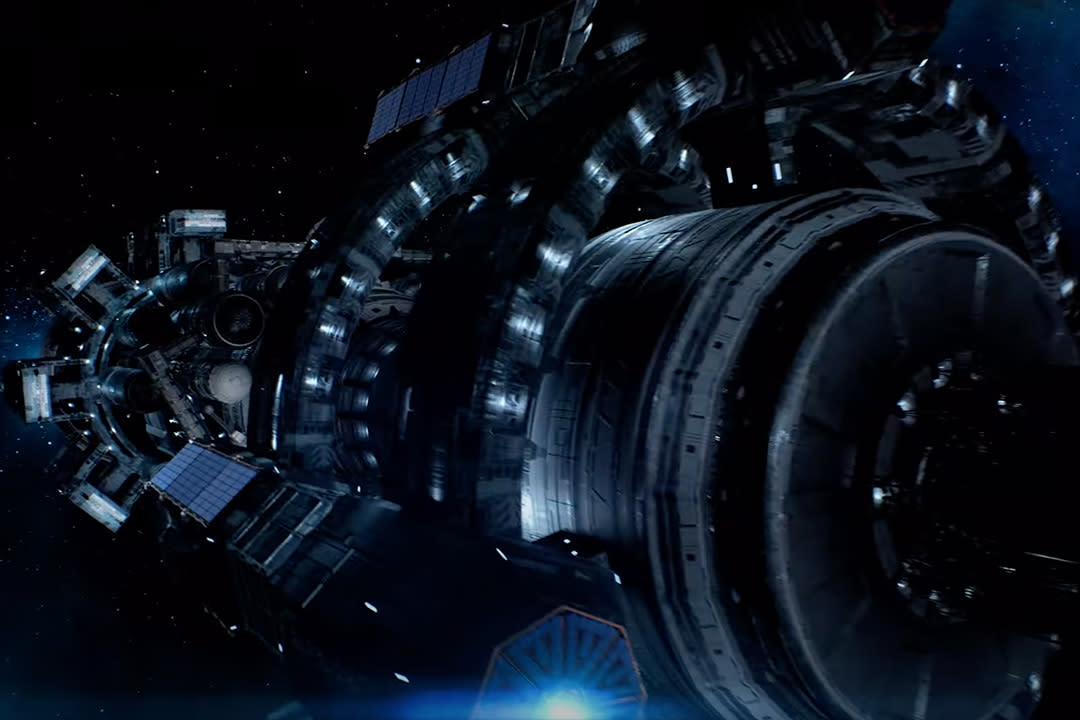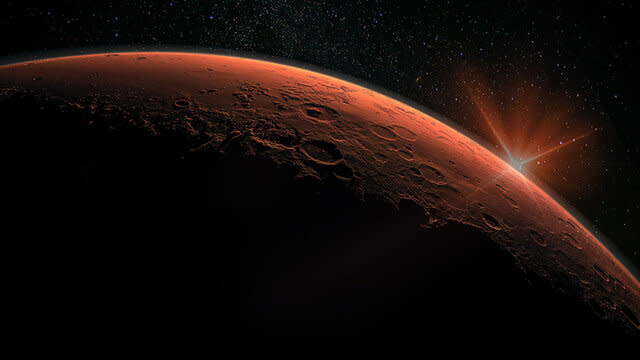Radiation Could Limit Mars Missions to Four Years

In SYFY’s The Ark (streaming now on Peacock!), a crew of human explorers must endure the long journey from Earth to Proxima centauri b, 4.2 light-years away. Embarking upon a journey of that scale seems almost impossible, thanks to the incredible distances involved. Proxima centauri is the star next door, but our fastest machines would take thousands of years to get there. Journeying even to points of interest in our own solar system will require missions which last years.
RELATED: Upcoming Solar Maximum Will Paint the Sky with Northern Lights
A crewed mission to Mars, for instance, would take approximately two-years roundtrip. Because of the way Earth and Mars move along their orbits, it’s difficult to shave time off of that mission without making much faster spaceships. From a certain point of view, it might make more sense to send Martian explorers for extended stays. If you’re looking at two years of travel time, you want the stay to be worth the hassle. A new study, however, suggests that missions to Mars shouldn’t last more than four years and should launch only at certain times, in an attempt to minimize the risk of space radiation.
LEAVING EARTH’S INVISIBLE RADIATION SHIELD
There are a lot of challenges when it comes to putting people on another planet. Getting them there alive and in good spirits is no small task, and it’s only the beginning. Once they touch down on Mars, they’re going to need shelter from the elements, air to breathe, food to eat, and water to drink, all of which will have to be produced on site or brought from home. Scientists all over the world are working to solve those problems in advance of a crewed Mars mission, but anyone leaving the relative safety of Earth will also have to contend with deadly radiation from space.

Photo: Elen11 / Getty Images
When you’re on the Earth, you’re protected from space radiation directly by the planet itself. Anything coming at you from one side of the cosmos will hit the planet before it hits you. You’re also protected less visibly by the Earth’s magnetic field, which behaves as a sort of force field, shielding you from cosmic energy blasts. Astronauts in low-Earth orbit also benefit from the same protections. Even 250 miles above the surface, they’re surrounded by the planet’s magnetic field with the Earth at their backs, but once you leave the Earth’s magnetosphere, you’re exposed to the full might of Solar Energetic Particles (SEPs) and Galactic Cosmic Rays (GCRs).
According to the study, published in the journal Space Weather, the intensity of both types of space radiation are driven largely by solar activity, at least within the boundaries of our solar system. There is a corresponding ebb and flow to the amount of each type as the Sun moves through its 11-year solar cycle. When the Sun is at solar maximum, we see more SEPs and fewer GCRs. The drop in GCRs is the result of additional magnetic shielding from the Sun itself, during maximum. The opposite is true when the Sun is at solar minimum.

Did the Curiosity rover find alien bones on Mars?
Researchers ran simulations, crunching the numbers on the safest time to leave the planet for a Martian road trip. They recommend a launch date at or near solar maximum, when the Sun is at its feistiest. That will give astronauts the greatest natural protection from cosmic rays. With optimal shielding, they calculate you can safely have a four year mission before sliding back into the protection of the Earth’s magnetosphere.
Counterintuitively, adding more shielding doesn’t necessarily extend mission times and, in fact, can increase the dose received by astronauts inside a craft or building. That’s because of secondary radiation produced by interactions between energetic GCRs and the shielding itself. Importantly, the study only looked at commonly used aluminum shielding. Existing and emerging composite materials may offer improved shielding and longer flight times.
Getting out of the system entirely and on the road to another star, that’s another class of problems altogether. Which is probably why the crew of the Ark One is having such a rough go of it. Catch The Ark, streaming now on Peacock!

